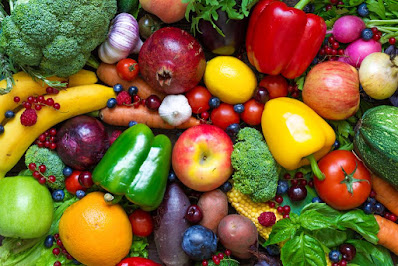What is a healthy diet?
Eating a healthy diet is not about strict limitations, staying unrealistically thin, or depriving yourself of the foods you love. Rather, it’s about feeling great, having more energy, improving your health, and boosting your mood.
Healthy eating doesn’t have to be overly complicated. If you feel overwhelmed by all the conflicting nutrition and diet advice out there, you’re not alone. It seems that for every expert who tells you a certain food is good for you, you’ll find another saying exactly the opposite. The truth is that while some specific foods or nutrients have been shown to have a beneficial effect on mood, it’s your overall dietary pattern that is most important. The cornerstone of a healthy diet should be to replace processed food with real food whenever possible. Eating food that is as close as possible to the way nature made it can make a huge difference to the way you think, look, and feel.
By using these simple tips, you can cut through the confusion and learn how to create—and stick to—a tasty, varied, and nutritious diet that is as good for your mind as it is for your body.
The fundamentals of healthy eating
While some extreme diets may suggest otherwise, we all need a balance of protein, fat, carbohydrates, fiber, vitamins, and minerals in our diets to sustain a healthy body. You don’t need to eliminate certain categories of food from your diet, but rather select the healthiest options from each category.
Protein gives you the energy to get up and go—and keep going—while also supporting mood and cognitive function. Too much protein can be harmful to people with kidney disease, but the latest research suggests that many of us need more high-quality protein, especially as we age. That doesn’t mean you have to eat more animal products—a variety of plant-based sources of protein each day can ensure your body gets all the essential protein it needs.
Calcium. As well as leading to osteoporosis, not getting enough calcium in your diet can also contribute to anxiety, depression, and sleep difficulties. Whatever your age or gender, it’s vital to include calcium-rich foods in your diet, limit those that deplete calcium, and get enough magnesium and vitamins D and K to help calcium do its job.
Carbohydrates are one of your body’s main sources of energy. But most should come from complex, unrefined carbs (vegetables, whole grains, fruit) rather than sugars and refined carbs. Cutting back on white bread, pastries, starches, and sugar can prevent rapid spikes in blood sugar, fluctuations in mood and energy, and a build-up of fat, especially around your waistline.
How to make vegetables tasty
While plain salads and steamed veggies can quickly become bland, there are plenty of ways to add taste to your vegetable dishes.
Add color. Not only do brighter, deeper colored vegetables contain higher concentrations of vitamins, minerals and antioxidants, but they can vary the flavor and make meals more visually appealing. Add color using fresh or sundried tomatoes, glazed carrots or beets, roasted red cabbage wedges, yellow squash, or sweet, colorful peppers.
Liven up salad greens. Branch out beyond lettuce. Kale, arugula, spinach, mustard greens, broccoli, and Chinese cabbage are all packed with nutrients. To add flavor to your salad greens, try drizzling with olive oil, adding a spicy dressing, or sprinkling with almond slices, chickpeas, a little bacon, parmesan, or goat cheese.
Satisfy your sweet tooth. Naturally sweet vegetables—such as carrots, beets, sweet potatoes, yams, onions, bell peppers, and squash—add sweetness to your meals and reduce your cravings for added sugar. Add them to soups, stews, or pasta sauces for a satisfying sweet kick.
Cook green beans, broccoli, Brussels sprouts, and asparagus in new ways. Instead of boiling or steaming these healthy sides, try grilling, roasting, or pan frying them with chili flakes, garlic, shallots, mushrooms, or onion. Or marinate in tangy lemon or lime before cooking.
















